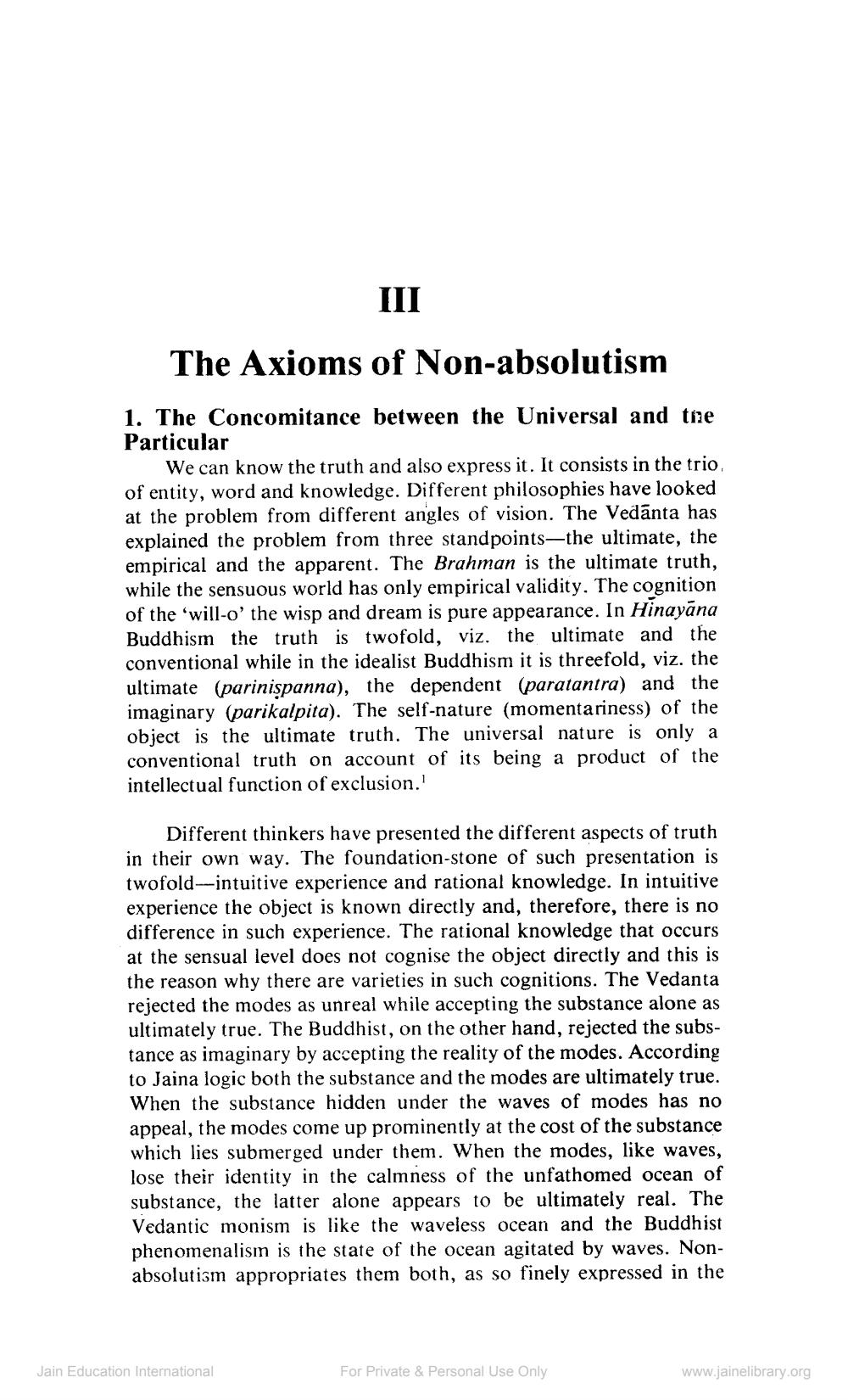________________
III
The Axioms of Non-absolutism
1. The Concomitance between the Universal and the Particular
We can know the truth and also express it. It consists in the trio, of entity, word and knowledge. Different philosophies have looked at the problem from different angles of vision. The Vedānta has explained the problem from three standpoints—the ultimate, the empirical and the apparent. The Brahman is the ultimate truth, while the sensuous world has only empirical validity. The cognition of the 'will-o' the wisp and dream is pure appearance. In Hinayāna Buddhism the truth is twofold, viz. the ultimate and the conventional while in the idealist Buddhism it is threefold, viz. the ultimate (parinişpanna), the dependent (paratantra) and the imaginary (parikalpita). The self-nature (momentariness) of the object is the ultimate truth. The universal nature is only a conventional truth on account of its being a product of the intellectual function of exclusion.
Different thinkers have presented the different aspects of truth in their own way. The foundation-stone of such presentation is twofold--intuitive experience and rational knowledge. In intuitive experience the object is known directly and, therefore, there is no difference in such experience. The rational knowledge that occurs at the sensual level does not cognise the object directly and this is the reason why there are varieties in such cognitions. The Vedanta rejected the modes as unreal while accepting the substance alone as ultimately true. The Buddhist, on the other hand, rejected the substance as imaginary by accepting the reality of the modes. According to Jaina logic both the substance and the modes are ultimately true. When the substance hidden under the waves of modes has no appeal, the modes come up prominently at the cost of the substance which lies submerged under them. When the modes, like waves, lose their identity in the calmness of the unfathomed ocean of substance, the latter alone appears to be ultimately real. The Vedantic monism is like the waveless ocean and the Buddhist phenomenalism is the state of the ocean agitated by waves. Nonabsolutism appropriates them both, as so finely expressed in the
Jain Education International
For Private & Personal Use Only
www.jainelibrary.org




